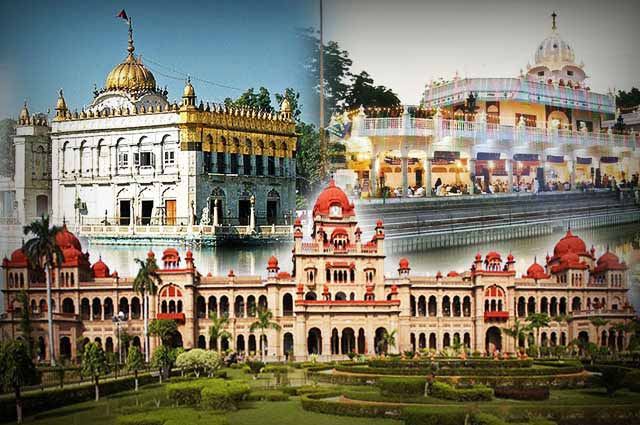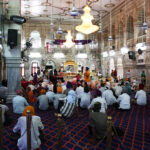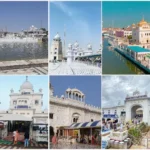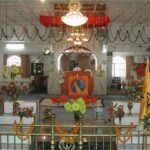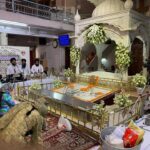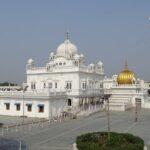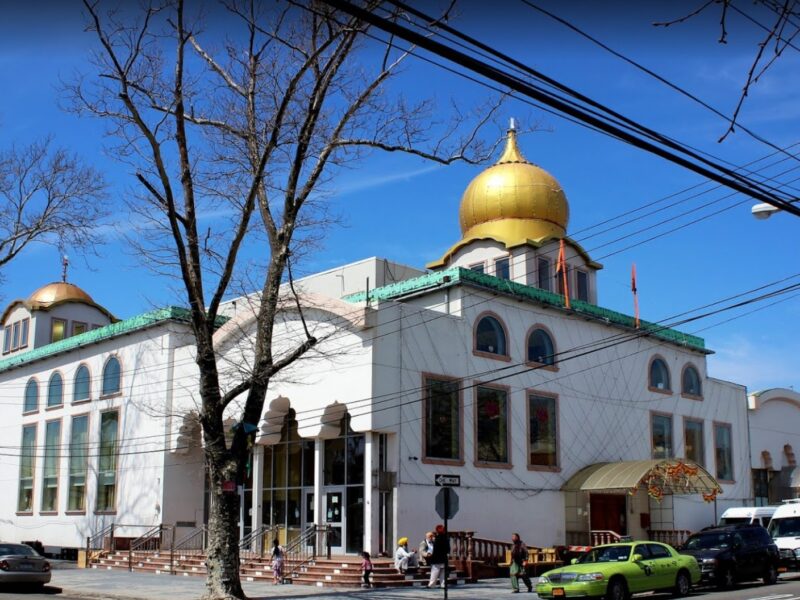Gurdwara Guru Nanak Dev Ji (Chheharta Sahib)
Gurdwara Guru Nanak Dev Ji in Chheharta is very important because it’s connected to Guru Nanak Dev Ji, who started Sikhism. Guru Nanak Dev Ji was born in 1469 and taught people to treat everyone equally, be kind, and worship the One Supreme Creator. The Gurdwara is a special place where people come together to pray, listen to teachings, and help each other, following the values Guru Nanak Dev Ji taught.
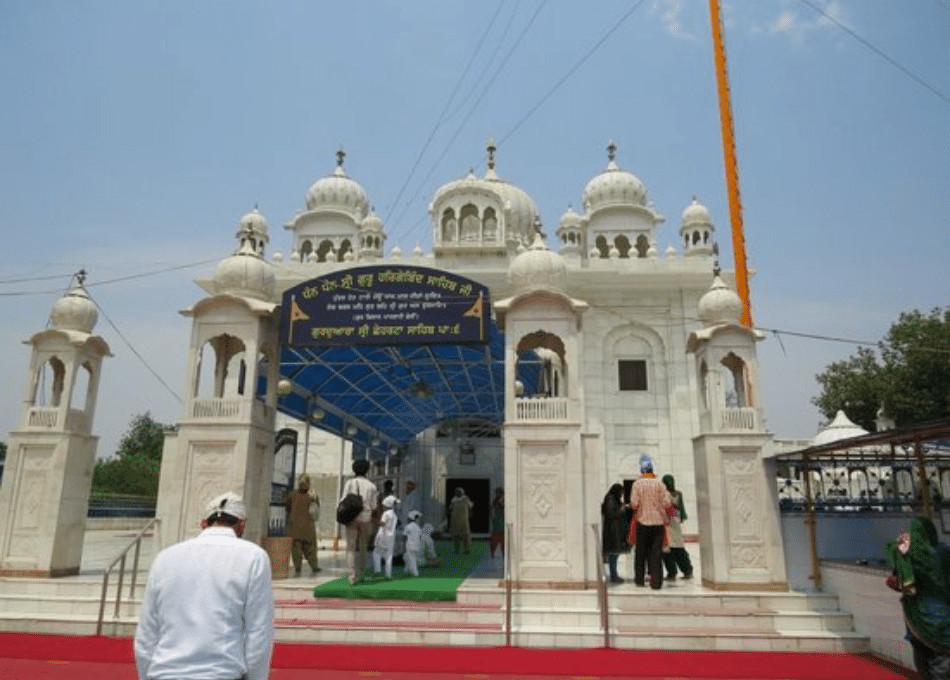
The Gurdwara Chheharta Sahib lies 8 kilometres from Amritsar, near Guru Ki Wadali. Chheharta is currently being built as an industrial township and is included in Vadali Guru’s area. The Gurudwara was given its name after a considerably large well built by Guru Arjan Dev, which was dug to commemorate the birth of his successor and son, Guru Hargobind. There were six Persian wheels erected around the well to pull water more quickly because there was so much of it; this is how the well got its name, Chehharta. Although the well is now covered, the water within the well is still pumped into the Gurudwara’s main tank. Shiromani Gurdwara Parbandhak Committee, which oversees other Vadali Guru shrines, manages the Gurdwara through a local committee.
The most important fair at this historic location is Basant Panchami, which takes place in the month of Magh and draws tens of thousands of worshippers across the nation.This festival’s main attraction is kite flying, and numerous events are hosted in this area. Throughout the event, many of the males attending this fair don the yellow turban. During this time, the local Gurudwara administration organises free medical care.
Gurdwara Manji Sahib (Santokhsar Sahib)
Gurdwara Manji Sahib, located near the Golden Temple in Amritsar, holds deep historical significance in Sikhism. The Gurdwara is intimately associated with the spiritual practices of Guru Arjan Dev Ji, the fifth Sikh Guru. Guru Arjan Dev Ji, who became the Guru in 1581, played a pivotal role in shaping Sikhism. He is renowned for compiling the Adi Granth, the central scripture of Sikhism, and for initiating the construction of the Golden Temple (Harmandir Sahib).
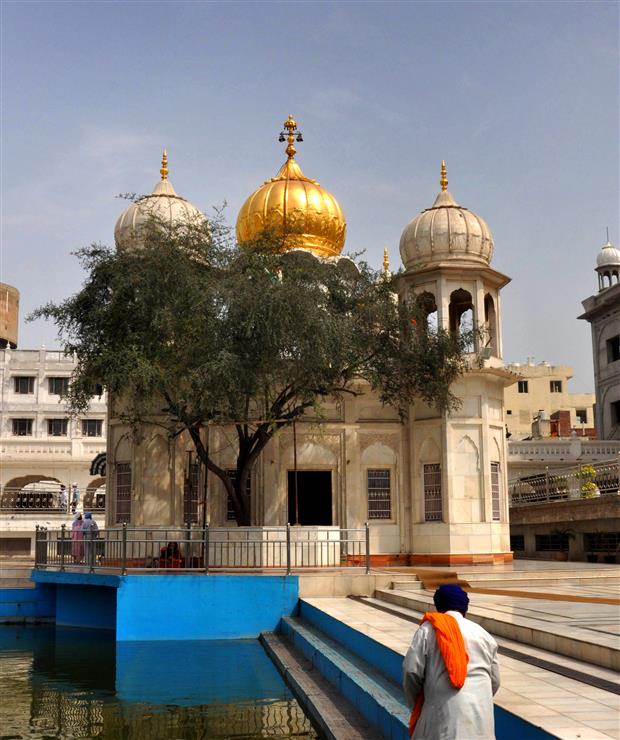
Gurdwara Manji Sahib is specifically linked to Guru Arjan Dev Ji’s practice of reciting Gurbani—the sacred hymns and teachings of the Sikh Gurus. It served as a place where Guru Ji would engage in the meditative and devotional recitation of Gurbani. The Gurudwara is associated with Guru Ram Das Ji and Guru Arjan Dev Ji, key figures in the founding and development of Sikhism. Sikhs visit this place to remember the efforts and contributions of these Gurus during the early days of the Sikh community.
Gurudwara Shri Tahli Sahib represents the roots of Sikhism, as it was here that the foundation of the first holy tank was laid. This historical connection allows Sikhs to reflect on the humble beginnings and the spiritual journey of their faith. Sikhs believe that visiting sacred sites, especially associated with the Gurus, brings blessings and spiritual benefits. They seek the blessings of the Gurus for guidance, protection, and overall well-being. Many also come with specific prayers and requests.
Gurdwara Shahid Ganj Bhai Taru Ji
Bhai Taru Ji was a devoted follower of Guru Arjan Dev Ji during a critical period in Sikh history. Guru Arjan Dev Ji faced persecution and torture under the orders of Emperor Jahangir due to his refusal to alter the Sikh scriptures. Bhai Taru Ji, witnessing the torture and persecution of Guru Arjan Dev Ji, could not bear the suffering of his beloved Guru. In an act of extraordinary courage and sacrifice, he decided to offer water to the Guru, who was being subjected to scorching heat and torture. The authorities, infuriated by Bhai Taru Ji’s act of compassion, subjected him to severe punishment. Bhai Taru Ji faced brutal torture and eventually attained martyrdom, sacrificing his life for the principles of Sikhism and in solidarity with Guru Arjan Dev Ji.
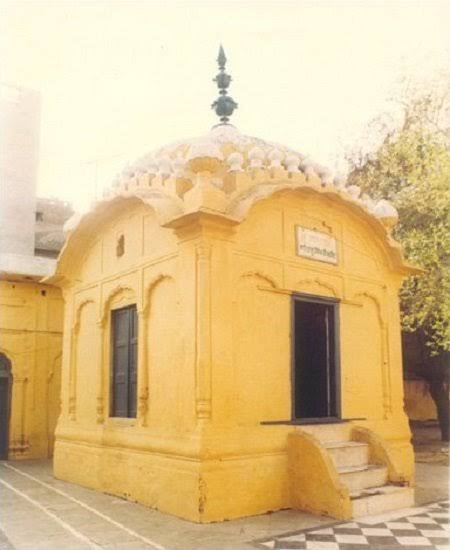
Gurdwara Shahid Ganj Bhai Taru Ji stands as a commemorative site to honor the sacrifice and martyrdom of Bhai Taru Ji. The term “Shahid Ganj” translates to “Martyrdom Shrine,” emphasizing the historical significance of this Gurdwara. Like many Gurudwaras, Gurdwara Shahid Ganj Bhai Taru Ji may exhibit traditional Sikh architectural features, including a prayer hall, domes, and the central Manji Sahib. The design is often intended to create a serene and spiritual ambiance for the sangat.
Sikhs and devotees visit Gurdwara Shahid Ganj Bhai Taru Ji to pay homage to the bravery and sacrifice of Bhai Taru Ji. The Gurdwara becomes a sacred space for reflection, prayer, and seeking inspiration from the spirit of selfless service and devotion demonstrated by Bhai Taru Ji.
Gurudwaras often serve as centers for educational and cultural activities. They may organize events to share the historical significance of Bhai Taru Ji’s martyrdom and the broader teachings of Sikh Gurus.
Gurdwara Shaheed Ganj Baba Deep Singh Ji
Gurdwara Shaheed Ganj Baba Deep Singh Ji is a special place in Sikh history that honors the bravery and sacrifice of Baba Deep Singh Ji. Baba Deep Singh Ji was a respected Sikh warrior, and this Gurdwara is dedicated to remembering how bravely he defended the Golden Temple in Amritsar, known as Harmandir Sahib. A long time ago, there were threats and attacks on Harmandir Sahib. Baba Deep Singh Ji played a crucial role during this tough time. In a famous incident, even after being seriously hurt, Baba Deep Singh Ji kept fighting. There’s a remarkable story that tells how he continued to fight with one hand while carrying his own severed head with the other.
The Gurdwara is called “Shaheed Ganj,” which means “Martyrdom Shrine.” This name emphasizes that it’s a place to remember those who sacrificed their lives for a noble cause. In this case, it’s Baba Deep Singh Ji’s sacrifice in defending the sacred Golden Temple.
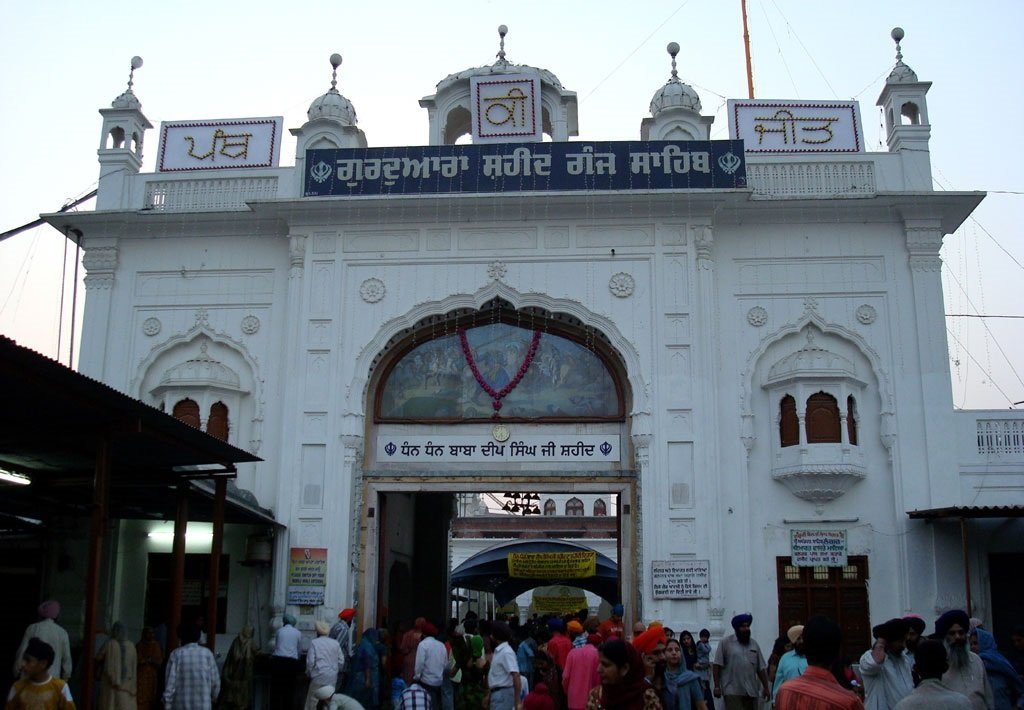
The Gurdwara has a special design with a prayer hall, domes, and a central place called Manji Sahib. This design creates a peaceful and spiritual atmosphere for people who visit. People, especially Sikhs, visit this Gurdwara to pay respect to Baba Deep Singh Ji’s courage and sacrifice. It’s a place for prayer, reflection, and to connect with the strong spirit of Sikhism.
Gurdwaras like Shaheed Ganj Baba Deep Singh Ji often do community service. This includes providing free meals (langar) and supporting local projects. They also organize events to educate people about the historical importance of Baba Deep Singh Ji and the teachings of Sikh Gurus.
Gurdwara Ramsar Sahib
Gurdwara Ramsar Sahib is a special place for Sikhs because it marks the spot where Guru Arjan Dev Ji, the fifth Guru, put together the Adi Granth, which is the holy book of Sikhism. A long time ago, Guru Arjan Dev Ji gathered the sacred writings of Sikh Gurus and other spiritual leaders to create one unified scripture. This important work of bringing these teachings together happened at Gurdwara Ramsar Sahib.
This Gurdwara is considered sacred because it’s where Guru Arjan Dev Ji took on the big task of compiling the Adi Granth. The place reminds Sikhs of the commitment to preserving and sharing the spiritual wisdom found in this holy scripture.
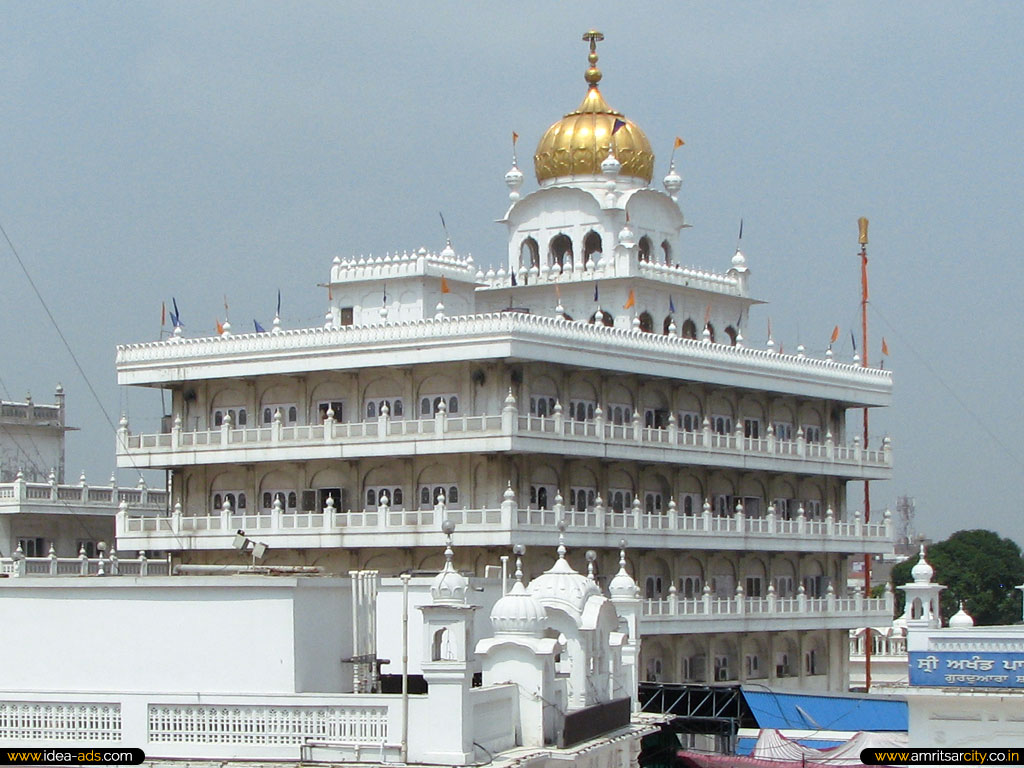
Gurdwara Ramsar Sahib is built at the location where Guru Arjan Dev Ji compiled the Adi Granth. The word “Ramsar” itself is derived from two Persian words, “Ram” meaning “God” and “Sar” meaning “lake” or “pool.” It is believed that there was a small pool or sarovar at this site during Guru Arjan Dev Ji’s time.The Gurdwara not only marks the physical space where the compilation occurred but also serves as a symbol of the spiritual and literary heritage of Sikhism.
Gurudwara Shree Tarn Taran Sahib Ji
Gurdwara Tarn Taran Sahib was built during the 16th century by the fifth Sikh Guru, Guru Arjan Dev Ji. The foundation stone of the gurdwara was laid by Guru Arjan Dev in 1590, and the construction was completed in 1598. The gurdwara was established to commemorate the visit of Guru Arjan Dev to the region and to serve as a place of worship and reflection for the Sikh community. The gurdwara is situated near a sarovar (holy tank), which is known as Tarn Taran. The sarovar is considered holy, and it is believed that taking a dip in its waters can have spiritual significance.
According to historical accounts, Guru Arjan Dev visited the area during his travels and observed the suffering of the local people due to the lack of water. In response, Guru Arjan Dev initiated the excavation of the sarovar to provide a sustainable source of water for the community. Gurdwara Tarn Taran Sahib is of great religious significance for Sikhs. It is believed that the water of the sarovar has healing properties, and pilgrims from far and wide visit the gurdwara to seek spiritual solace and take part in religious ceremonies.
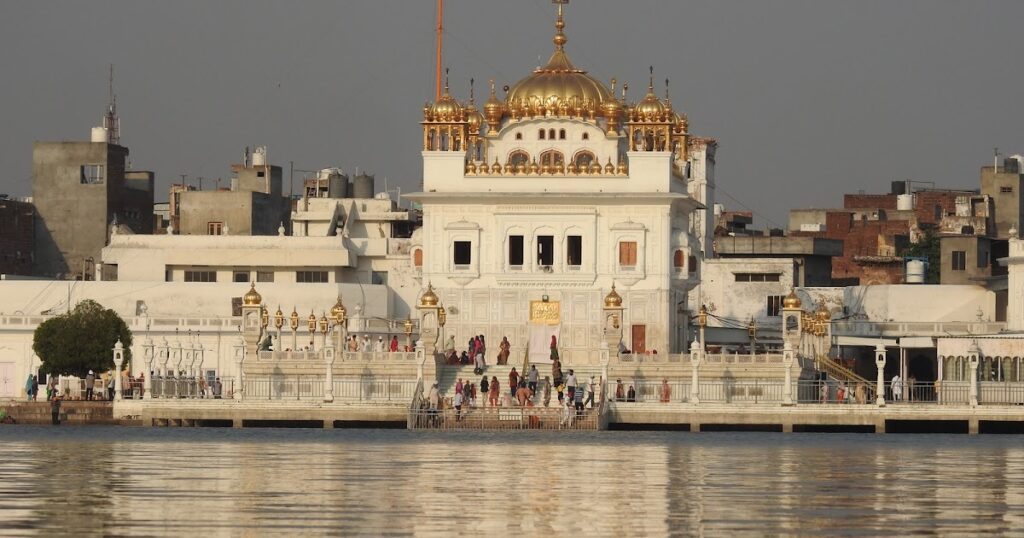
The gurdwara complex includes the main prayer hall, the sarovar, and other structures. The architecture is in the traditional Sikh style, and the main building is adorned with intricate designs and artwork.Gurdwara Tarn Taran Sahib Ji is a special place for Sikhs in Punjab, India. It was built a long time ago by Guru Arjan Dev Ji, the fifth Sikh Guru. Over many years, people have taken care of it by making changes and fixing things. They want to keep the history and importance of the gurdwara alive.
The gurdwara has a pool called Tarn Taran, and it is thought to have special water. People come from different places to visit and take part in religious events there. The building itself is designed in a Sikh style, with beautiful patterns and artwork.To make sure the gurdwara stays in good condition, the Sikh community has worked hard to protect its history and spiritual importance. They have done repairs and made the gurdwara even better. It continues to be a significant place for Sikhs to connect with their heritage and spirituality.
Gurdwara Sri Thara Sahib Amritsar
Gurdwara Thara Sahib Amritsar is situated a 20 meters north of Sri Akal Takht Sahib in the Sri Harmandir Sahib complex. This is where Sri Guru Tegh Bahadur Ji rested when he arrived from Baba Bakala to pay his respects to the Darbar Sahib soon after he was announced as the next Guru. The custodians of Sri Harmandir Sahib closed the doors to Guru Tegh Bahadur to safeguard their vested interests.
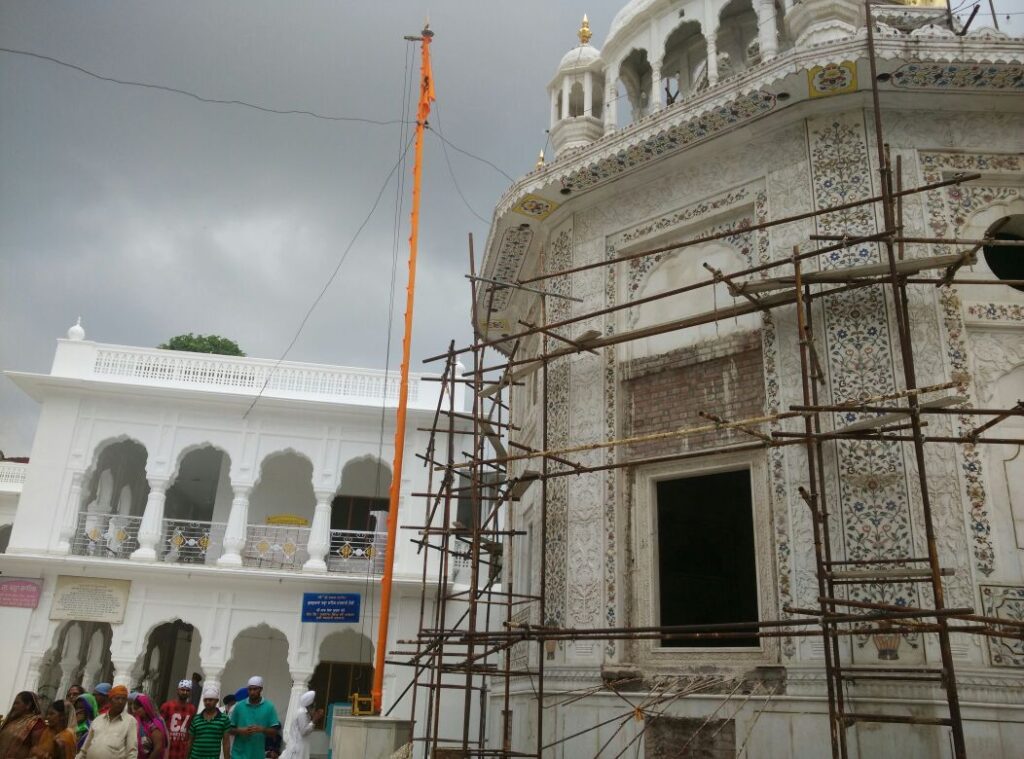
Soon after the public announcement by Baba Makhan Shah, Guru Tegh Bahadur with a party of Sikhs travelled to Amritsar to pay obeisance at the Sri Harmandir Sahib. However on his arrival at this sacred Gurdwara, Guru Tegh Bahadur was rebuffed by the Sodhi family Sardars who then had control of the Gurdwara and he was not allowed to enter the main section of the complex but went as far as the current Thara Sahib.
The party found that the doors of this premier Sikh Gurdwara were suddenly shut and they were refused admittance. The reason for this action was that the greedy “masands” (caretakers) of Amritsar had acknowledged Guru Arjan Sahib Ji’s elder brother Prithi Chand to be their Guru. It was under the instructions of Harji, the impostor (Mina) Guru of that time, that the doors of Sri Harmandir Sahib were closed to Guru Tegh Bahadur Ji.
Gurdwara Sri Mata Kaulsar Sahib
Gurdwara Sri Mata Kaulsar Sahib, also known as Gurdwara Mata Kaulan Sahib or Gurdwara Kaulsar Sahib, is a sacred Sikh Gurdwara on the western side of Gurdwara Sri Baba Atal Sahib in Amritsar near the main Darbar Sahib at Sri Harmandir Sahib. Bibi Kaulan was a highly spiritual woman who was above religious divides and took refuge with Sri Guru Hargobind Sahib Ji at Amritsar (1606-1645). The samadh of Mata Kaulan lies at the western end of the Kaulsar Gurdwara.
Mata Kaulan, against whom her ‘father’ the qazi had pronounced a death sentence, for showing devotion to Sikh Gurus, was brought discreetly to Amritsar by Pir Mian Mir. Mata Kaulan, who was allotted a special place near Sri Harmandir Sahib and Gurdwara Sri Baba Atal Sahib, where she spent most of her adult life before breathing her last at Kartarpur.
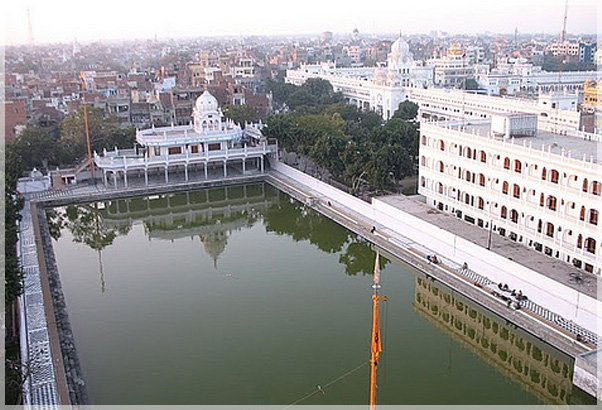
Next to the Gurdwara Mata Kaulan lies a sarovar (pool) known as Kaulsar Sahib or Kaulsar Sarvor, named after a holy lady who was raised as a muslim called Bibi Kaulan, the adopted (possibly hindu) daughter of the Qazi of Lahore. The significance of Gurdwara Mata Kaulan and Kaulsar sarovar could be adjudged from the fact that Guru Hargobind directed Sikhs to bathe in the Kaulsar sarovar before the Sri Harmandir Sahib (a sakhi to this effect is written right outside the entrance of Gurdwara Sri Mata Kaulsar Sahib, adjacent to the Darbar Sahib).
The excavation of Kaulsar was started in 1624 and was completed in 1627 under the supervision of Baba Budha Ji, the first head Granthi of Sri Harmandir Sahib. Kaulsar is one of the five holy tanks (Sarovars) at the holy city of Amritsar including Santokhsar, Bibeksar, Ramsar and the main one after which the city is named, Amritsar at Sri Harmandir Sahib.
Gurdwara Sri Thada Sahib Amritsar
urdwara Sri Thada Sahib is a special place in the Golden Temple complex in Amritsar. It’s believed that Guru Ram Das Ji, the fourth Sikh Guru, used to sit there and watch the digging of the sacred pool (sarovar) for the Golden Temple. This shows how much Guru Ram Das Ji cared about building this important Sikh place. The gurdwara marks the exact spot where he supervised the work. It’s a reminder of the Guru’s personal involvement in constructing the Golden Temple.
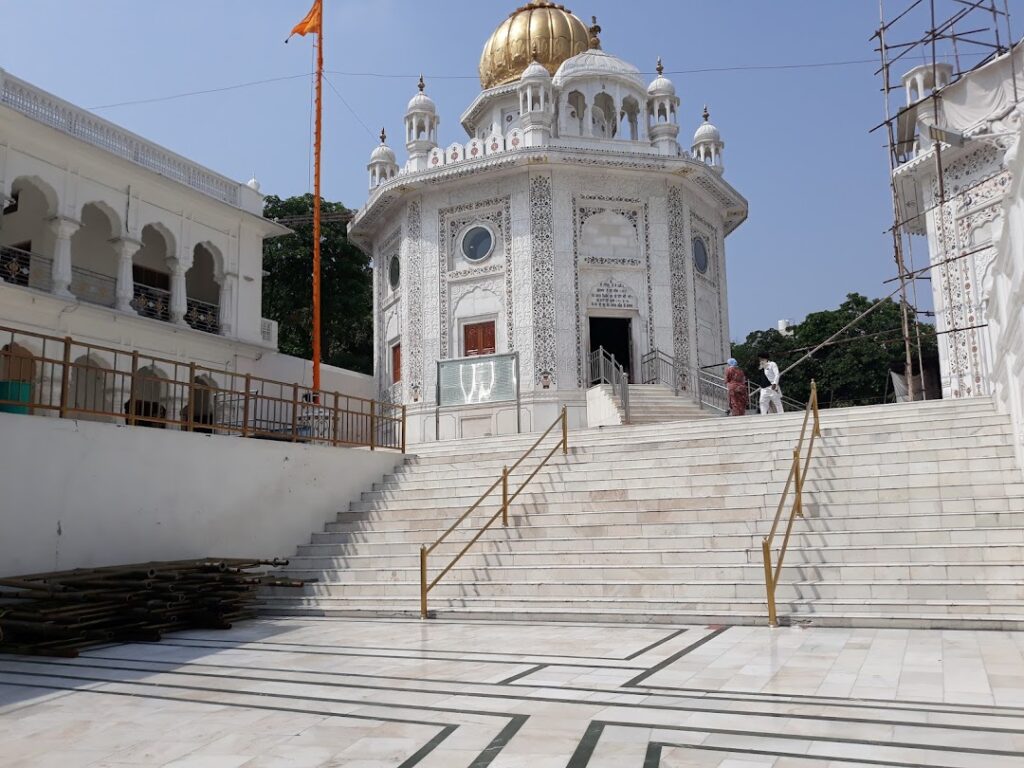
According to the information provided, it is mentioned that both Sri Guru Nanak Sahib Ji and Sri Guru Angad Sahib Ji also visited this site. Visits by these revered Gurus are often associated with spiritual significance and historical importance in Sikh tradition. Sri Guru Arjan Sahib Ji, the fifth Sikh Guru and the compiler of the Guru Granth Sahib, is said to have recited the Shabad in Raag Ramkali titled ‘Athsath tirath jah sadhu pag dareh’ at this location. The recitation of sacred verses at such sites adds to the spiritual importance of the place.
It is mentioned that some believe bathing near Gurdwara Sri Thada Sahib to be spiritually more beneficial than bathing in the 68 holy places around India. This belief may stem from the historical events associated with the site and the connection to the Gurus. The emphasis on the spiritual efficacy of this particular location underscores the reverence Sikhs hold for the Gurdwara.
Gurdwara Sri Baba Bota Singh And Baba Garja Singh
This Gurdwara is in the memory of Baba Bota Singh and Baba Garja Singh, who challenged the mughal forces on 27th July 1739, near Sarai Nurdin, about 6km from Taran Taran City. Both won martyrdom fighting against the mughals. The Gurdwara is situated near Gurdwara Sri Shaheed Baba Deep Singh and Gurdwara Sri Ramsar Sahib Amritsar.
Many are familliar with the story of Bhai Bota Singh and Bhai Garja Singh. The fact is however, that the true details of their heroic and bloody shaheedi are not commonly known.The details are shocking and awe-inspiring. How, with broken bones, they crawled towards the enemy is ignored by most history books.
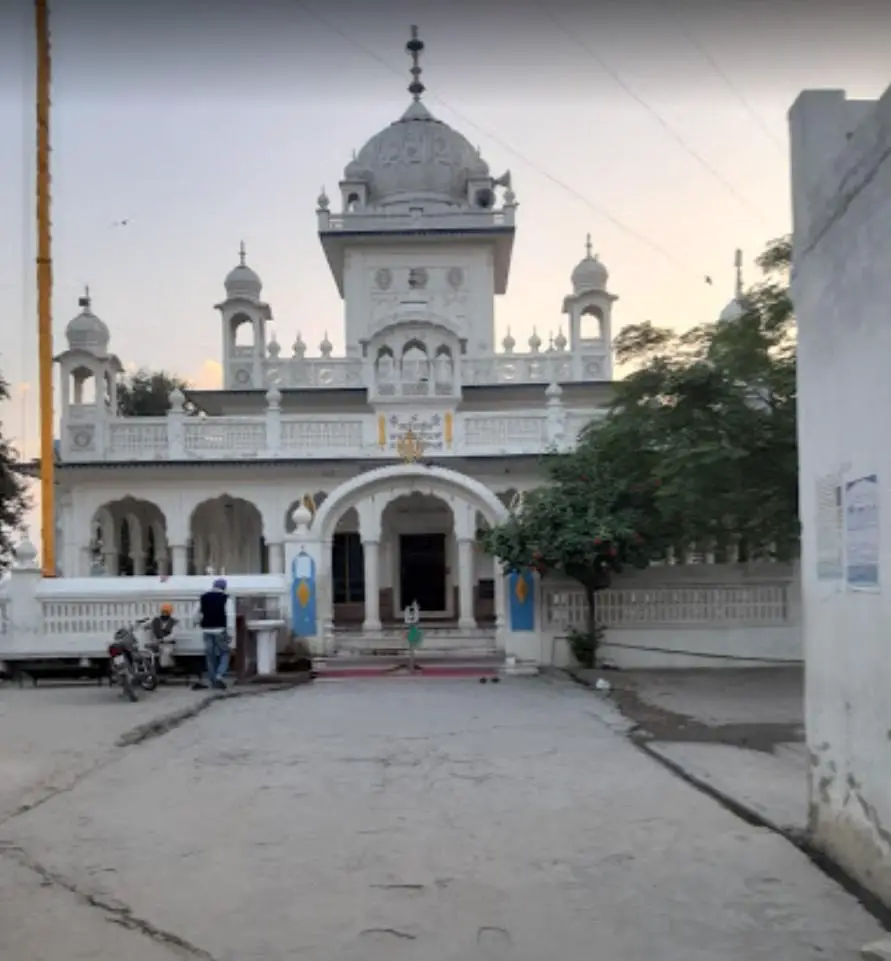
During a period of four months, no Singh (Sikh warrior) was seen in the Punjab region, leading people to believe that all the Singhs had been killed. There was a misconception that the Mughals had defeated the Sikhs, and the Khalsa had been completely wiped out. Despite the rumors and misconceptions, the passage suggests that the Singhs had not been defeated. The narrative highlights that the Singhs were still alive, and the people were unaware of their continued resistance against the Mughals.
The passage indicates that the details of Bhai Bota Singh and Bhai Garja Singh’s martyrdom are shocking and awe-inspiring. It mentions how, with broken bones, they crawled towards the enemy, showcasing their determination and resilience in the face of adversity.
Gurdwara Sri Bibeksar Sahib
Gurdwara Sri Bibeksar Sahib is located on the banks of the Bibeksar Sarovar, which was constructed in 1628. The sarovar, or sacred pool, was built by Sri Guru Hargobind Sahib Ji, the sixth Sikh Guru. Guru Hargobind Sahib Ji personally laid the foundation of the sarovar, highlighting its spiritual significance.
The gurdwara itself was later constructed by Maharaja Ranjit Singh, a prominent Sikh ruler, emphasizing the continued reverence for this historical site. The location is bordered by the ancient villages of Chattiwind and Sultanwind, which are now part of Amritsar city.
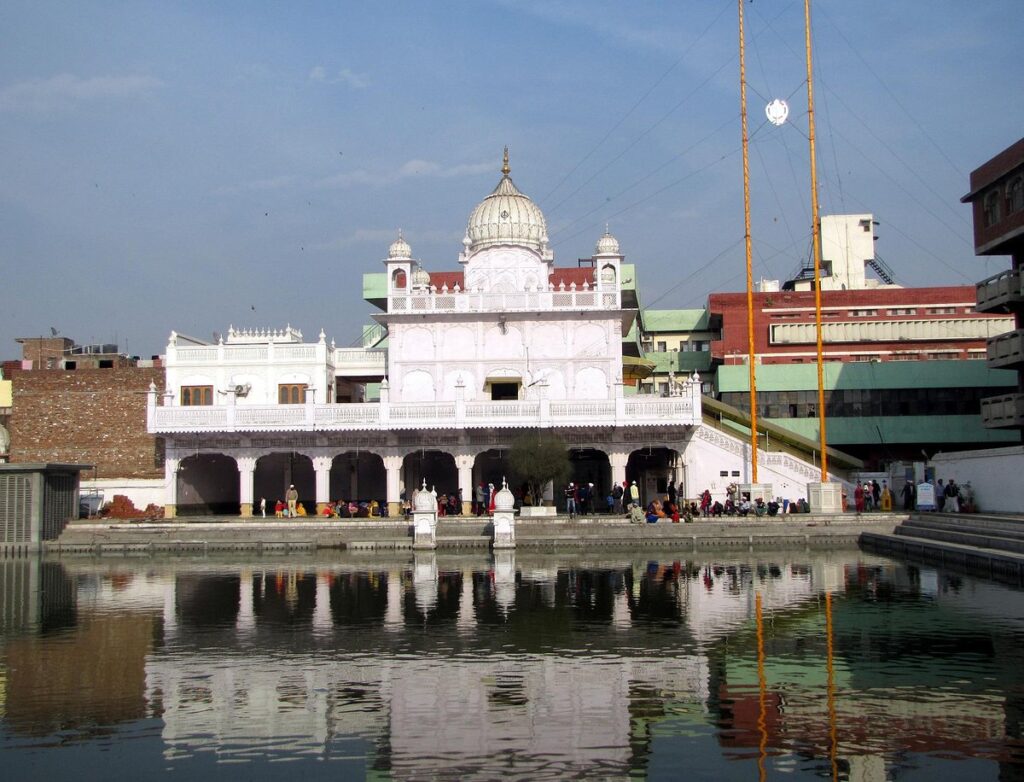
In addition to its religious importance, the site holds historical significance due to the activities of Guru Hargobind Sahib Ji. Nearby, there used to be a beautiful garden where Guru Hargobind would visit. The Guru often rested at the edge of the sarovar, the very place where Gurdwara Sri Bibeksar Sahib stands today. It was also a site for the Guru’s evening meetings. Furthermore, the historical context includes the organization of Sikhs as a military force by Guru Hargobind after skirmishes with Mughal forces. This aspect highlights the multi-faceted role of the Sikh Gurus, not only as spiritual leaders but also as leaders who navigated challenging political and military situations.
One notable feature is the Karir tree, which marks the spot where Guru Hargobind used to tie his horse. This tree serves as a tangible link to the historical events associated with Guru Hargobind Sahib Ji and can still be observed at the site.
Gurdwara And Burj Akali Phula Singh
Akali Phula Singh Ji was the mukh sewadar of Sri Akal Takht Sahib and a very brave and famous General of Maharaja Ranjit Singh at the time. The Gurdwara and tower (burj) are in memory of Akali Phula Singh Ji.
Akali Phula Singh settled down in Amritsar, where, today, a burj (tower) and gurdwara stands. The location was known as Nihangan di Chawoni (Camp of the Nihangs) still stands in his memory. As a child ‘Baba Ji’ decided to dedicate his life to the care of Sikh Gurdwaras. He loved to serve people in accordance with the Guru’s message.
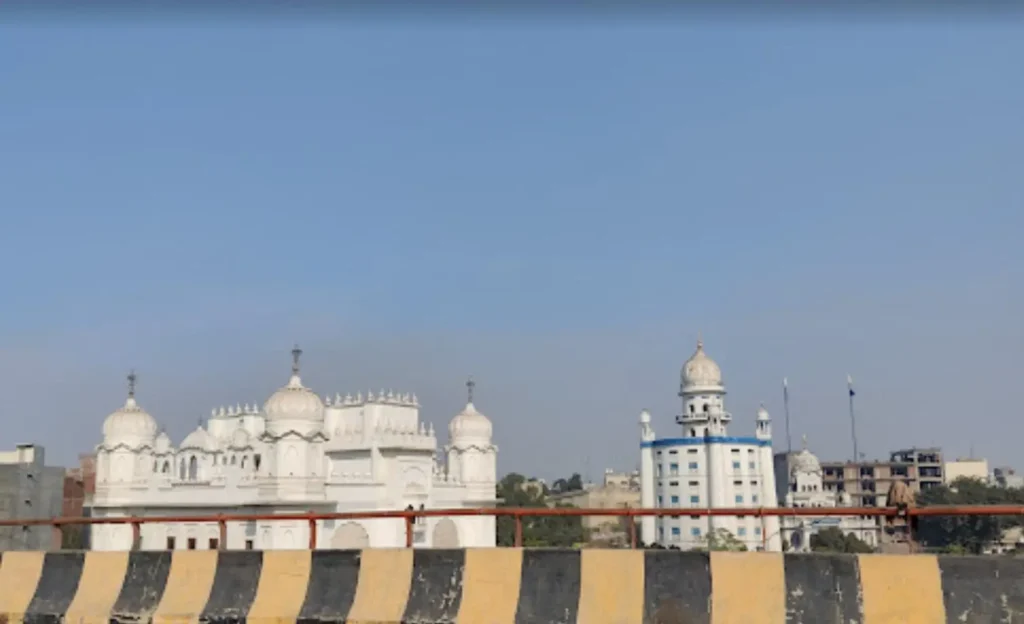
Later, when he was 18 years old he shifted to the fort of Gobindgarh where he became a leader of one of the bands of fighters (a squad) of the Sikh army. When Maharaja Ranjit Singh sought to make Amritsar part of Khalsa Raj he first laid siege to the city. When Akali Phula Singh saw the forces of the Bhangi Misls (then in control of Amritsar), preparing to face their fellow Sikhs Akali Phula Singh, with some leading citizens of the city, bravely put themselves in harms way, between the opposing forces.
Addressing each group, he spoke of the futility and senselessness of Sikhs spilling each others’ blood. Peace and reconciliation was chosen and the Bhangi chieftains each surrendered their share of Amritsar into the Maharaja’s hands. Akali Phula Singh joined the Maharaja’s army along with 3,000 Nihangs. For his many efforts he was made the mukh sewadar of the Akal Takht in 1807.
A born leader, who lived his life in accordance with the moral codes of the Sikh Gurus, he even called Maharaja Ranjit Singh to task, when he married outside of the Sikh fold (he had married a Muslim woman, named Moran of Lahore). As the mukh sewadar of the Akal Takht, Akali Phula Singh, declared that Maharaja Ranjit Singh was no longer a Sikh, declaring him to be a Tankhaiya
Gurdwara Bhai Manjh Da Khooh
Bhai Manjh Sahib Ji whose name was ‘Tiratha’, was a preacher of his local area in Amritsar. Bhai Manjh had a ‘Sakhi Sarvar Da Peerkhana’ at his home, which was a religous establishment. Bhai Manjh also used to visit ‘Nigahe Sarvar Pir’ every year. He was the ‘Chaudhary’ of the village.
Bhai Manjh was a rich and well known person, he was a resident of village Kang Mai, Hoshiarpur district and had two Peerkhana’s at his place. Every Thursday he used to offer bread (roti) at the ‘Peerkhana’ and take his devotees for religous sermons. Sometimes he used to take his jatha (group of devotees) to ‘Nigaha’. In the year 1585, when Bhai Ji was going back to his village from Nigaha, he stayed at Amritsar. In the company of Sri Guru Arjan Sahib Ji, he learnt about the life of Sikhs and Sikhism.
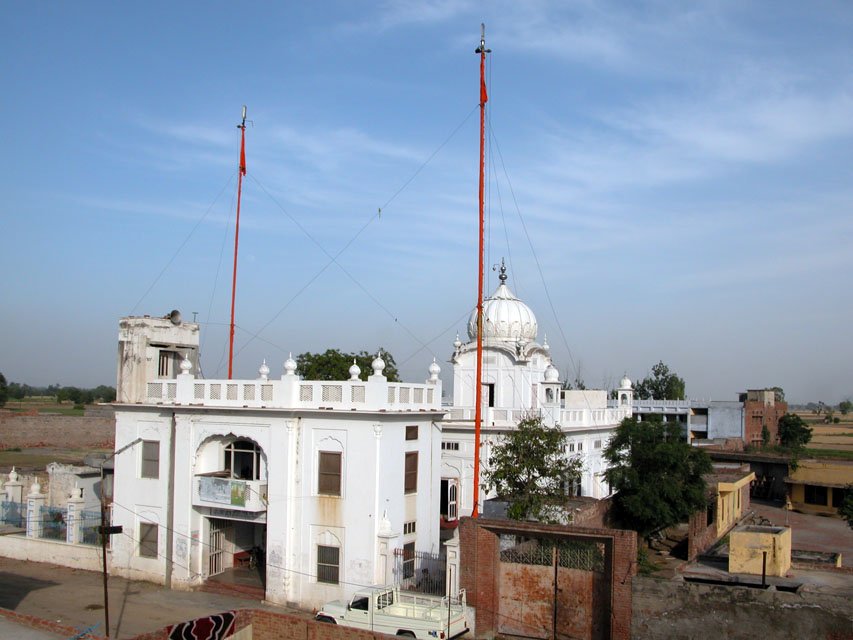
Bhai Manjh had not seen such happiness, he asked Guru Arjan to grant him ‘Sikhi’. Guru Arjan replied ‘Purkha, Sikhi utte Sikhi nahin tikdi’. Guru Arjan asked him to get rid off all the things which go against Sikhism, only then would he be able to experience Sikhi. When you follow Akal Purakh’s footsteps and follow the path of truth, you will need to tolerate the anger of the common man also. So if you can give such a sacrifice, only then you can go along with Sikhism.
Bhai Manjh Ji returned to his village, demolished the Peerkhana and stopped praying to Sakhi Sarvar. Bhai Manjh Ji’s fate took a turn for the worse, his cattle started dying. Still, Bhai Ji remained unshaken, he kept working with his full faith in Akal Purakh. Bhai Manjh was removed from the position of leader of the village, due to complaints received from people against him but he remained steady.
Gurdwara Bhai Shalo Da Tobha
Bhai Shalo Ji, was a well known and important Sikh during the times of Guru Ram Das Ji, Guru Arjan Sahib Ji, and Guru Hargobind Sahib Ji. Bhai Shalo was born on 29th September 1554, in the village of Daula Kingra, Muktsar Sahib district of Punjab, to Bhai Dyala Ji and Mata Sukhdei Ji. The family were a dhaliwal jat family of the Malva region of Punjab.
Bhai Shalo’s parents were originally followers of Pir Sakhi Sarwar (Sultanias). After having Darshan of Guru Ram Das Ji (1574-1581) Bhai Shalo’s parents becam Sikhs. Bhai Shalo’s parents migrated to village Majitha, located in Amritsar District of Punjab, where they settled. But Bhai Shalo who was then a young youth, stayed at Amritsar, then known as Guru Ka Chak, with Guru Sahib. Bhai Shalo would carry out selfless service (sewa) and meditation (simran).
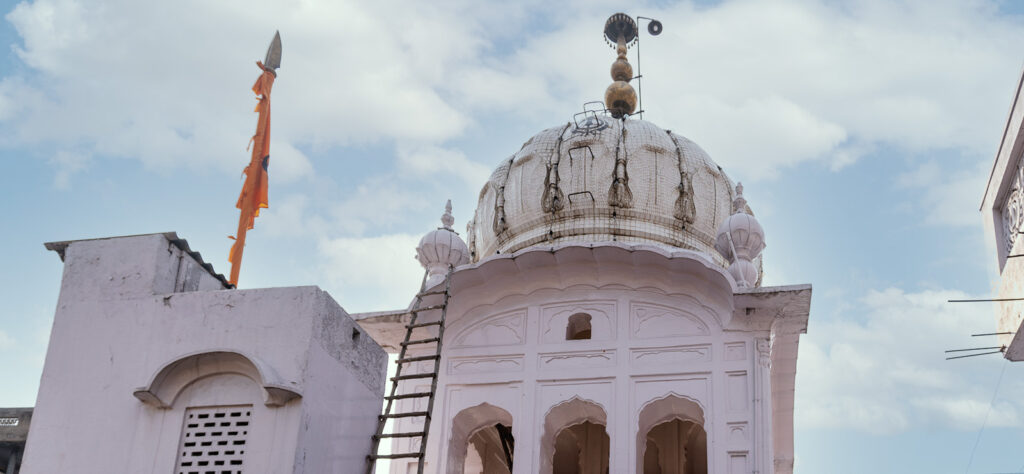
The Sikh sangat, from Lahore, visiting Guru ji in Amritsar would stop at the dharamsal of Bhai Shalo. Guru Arjan Sahib Ji himself visited Bhai Shalo’s dharamsal many times, showing the affection which Guru ji had for his gursikhs. In 1589, Bhai Shalo attended the wedding of Guru Arjan Sahib Ji to Mata Ganga Ji, at Gurdwara Sri Mao Sahib, with many other great gursikhs. And Bhai Shalo also attended the wedding of Guru Hargobind Sahib Ji, in circa 1605. Bhai Shalo Ji re-joined with God in the year 1628, at the age of 74.
Gurdwara Bhai Shalo Da Tobha is located near Gurdwara Guru Ka Mahal, where the Ninth Sikh Guru was born and Qila Lohgarh Sahib, in the City of Amritsar. The building of the Gurdwara dates back to the Sikh era, during the reign of Maharaja Ranjit Singh 1799-1839, its architectural designs are typical of Ranjit Singh’s era.
Gurdwara Qila Lohgarh Sahib Amritsar
Gurdwara Qila Lohgarh Sahib in Amritsar is an important place in Sikh history. After Sri Guru Arjan Sahib Ji was killed, his son, Sri Guru Hargobind Sahib Ji, became the sixth Sikh Guru. Guru Hargobind Sahib Ji listened to his father’s advice and started gathering a group of Saint Soldiers. They were like an army of spiritual warriors, and their goal was to stand up against the mistreatment by the Mughal rulers. This gurdwara represents the time when Guru Hargobind Sahib Ji began organizing the Sikh community to protect their rights and beliefs.
In response to increasing tensions, a clash occurred between a group of Sikh and Mughal hunting parties, marking the beginning of the Battle of Amritsar. The conflict started with the capture of a rare white hawk, a symbol of royal authority, belonging to the Mughal Emperor Shah Jahan.
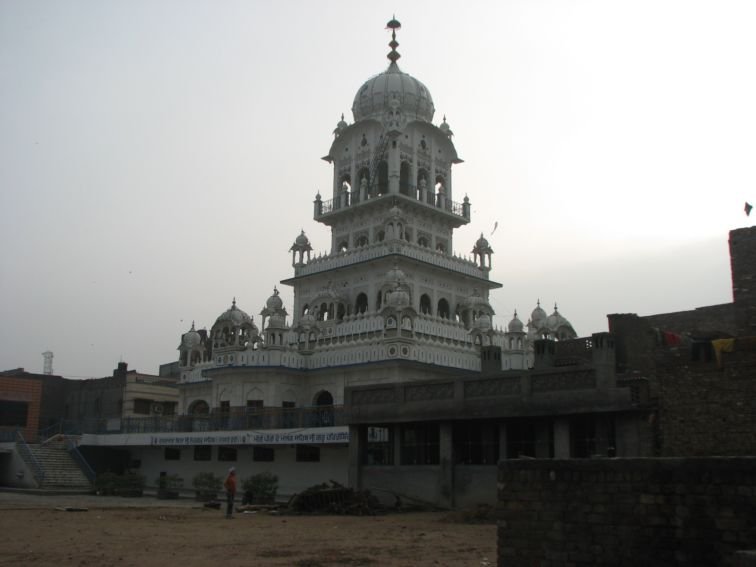
The Mughals, angered by the loss of the prized hawk, confronted the Sikhs. The situation escalated into a small violent conflict, leading to the Mughals returning with a large army of 7,000 soldiers against the Sikhs’ 700. The Sikhs, stationed at the mini fortress of Lohgarh (now Gurdwara Qila Lohgarh Sahib), resisted fiercely.
The battle eventually moved to the site of Gurdwara Sri Sangrana Sahib Chabba. Despite being outnumbered, the Sikhs, under the leadership of Guru Hargobind Sahib Ji, emerged victorious. The confrontation led to the local people gaining respect for Guru Hargobind Sahib Ji.
